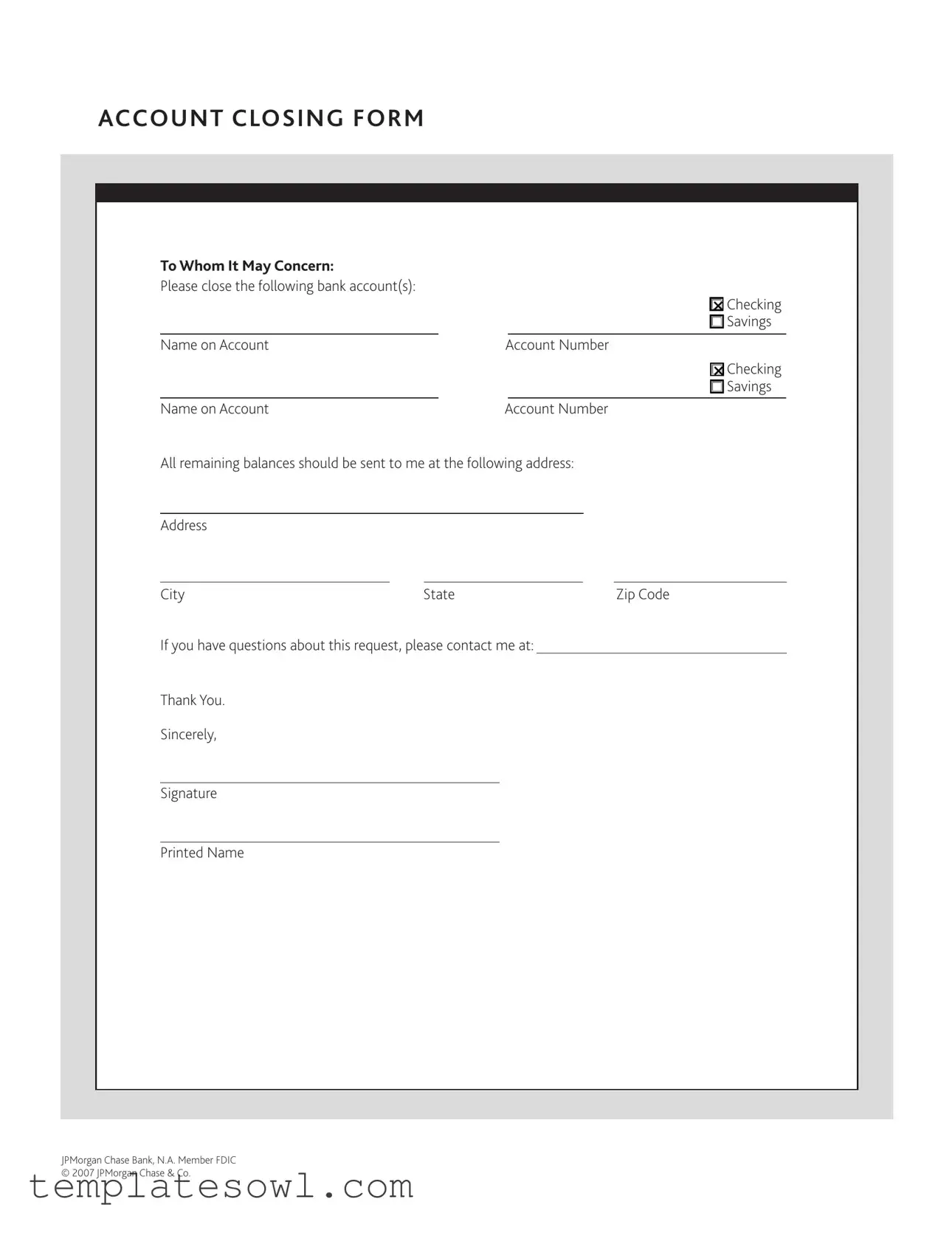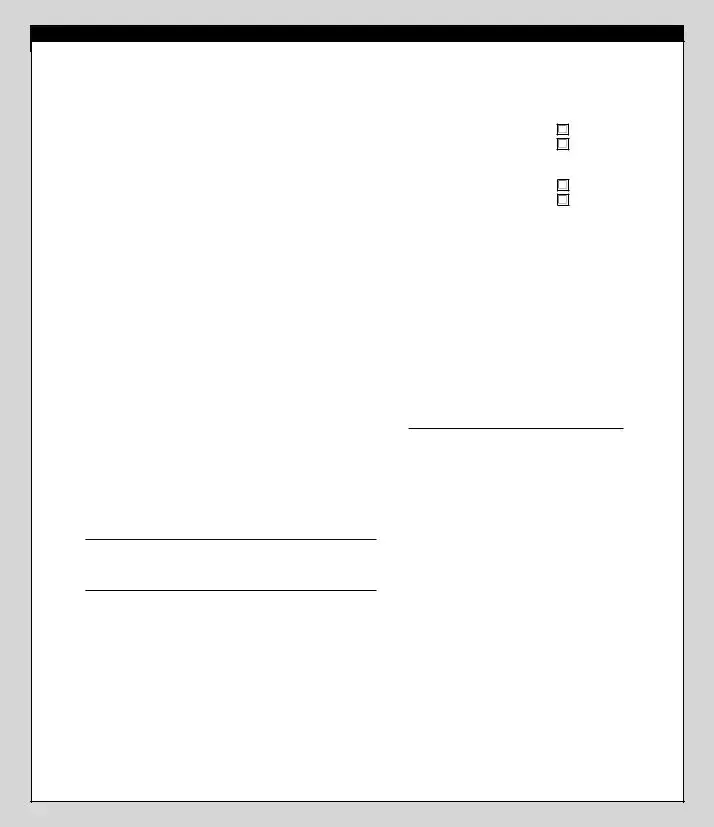What is the purpose of the Account Closing form?
The Account Closing form serves to formally request the closure of your bank accounts. It provides the bank with the necessary details, such as the account numbers and the type of accounts (checking or savings), to process your request efficiently. By using this form, you ensure that your closure request is documented and handled correctly.
Why do I need to specify the type of accounts I am closing?
It is important to specify whether you are closing a checking account, a savings account, or both. This clarity helps the bank to accurately identify which accounts need to be closed and avoids any potential confusion during the processing of your request.
What happens to the remaining balance in my account after it is closed?
Any remaining balance in your account will be sent to you at the address you provide on the form. Therefore, it is crucial to ensure that the address is correct and up to date. Miscommunication could delay the funds reaching you.
Can I close my account immediately after submitting the form?
No, the closure is not necessarily instantaneous. After submitting your Account Closing form, the bank needs time to process your request. This process could take a few days, depending on the bank's policies and procedures. Money owed or upcoming transactions should be settled before closure is finalized.
Do I need to sign the Account Closing form?
Yes, your signature is required. Signing the form serves as your official consent for the bank to close the account(s). This step protects you and the bank by preventing unauthorized requests for account closures.
Whom should I contact if I have questions regarding my account closure request?
If you have questions, you should contact the customer service department of your bank. The form includes a section where you can provide your contact information to ensure the bank can reach you with any questions they might have about the closure request.
Is there any fee for closing my account?
Typically, banks do not charge a fee for closing an account, but this can vary by institution. It's advisable to check your bank's policy regarding account closures and any potential penalties, especially if the account is being closed before a specified period or under a promotional agreement.

